How Amazon turned Simon Stålenhag’s ‘Tales from the Loop’ into a TV show
Not your typical adaptation.
Simon Stålenhag isn't a household name. But if you like robots and Scandinavian design, you've probably seen his work on the internet. The Swedish artist, musician and designer is known for producing images that combine rural or suburban life with flashes of science fiction. One picture shows two teenagers in a snowy field, throwing a red pole at some drones that wandered too close. Another depicts a solitary car and, in the distance, a massive bipedal robot with wiry tendrils that connect to hundreds of people on the ground wearing ominous headsets.
Now, these drawings have been turned into a TV show.
Tales from the Loop, which premiered on Amazon Prime Video today, shares the same name as Stålenhag's first artbook and a paper and pen role-playing game Kickstarted in 2016. These publications provide an optional but fascinating explanation for the fantastical elements in the drawings. The RPG also provides a blueprint, through well-written "mysteries'' (the game's version of quests) and stereotypical high school characters, to create some tabletop adventures inspired by The Goonies, E.T., and Netflix's Stranger Things.
Amazon's adaptation isn't set in Sweden, though, or anywhere else in Europe for that matter. It's also not an upbeat adventure about kids defying their parents and saving the world from an overly-ambitious government outfit. Surprisingly, it's a collection of stories that feel like melancholic art films. They have Stålenhag's iconic imagery peppered throughout, but the tone is noticeably slower and more thoughtful than most sci-fi shows. Think Black Mirror or The Twilight Zone, but with a less sinister or terrifying twist. A better point of comparison is Her, a romantic movie directed by Spike Jonze. While technology plays a major role in the film, it's more of a prompt or lens to explore how human relationships can change over time.
The Amazon TV show was conceived by Nathaniel Halpern, a writer and producer who worked on Legion, a mind-bending depiction of Marvel's mutant antihero David Charles Haller. Halpern has never read the crowdfunded RPG book. The show does have a titular loop buried beneath the ground, similar to the Large Hadron Collider near Geneva, Switzerland. But in at least some of the episodes (curiously, Amazon gave critics episode one, four and six to review) there's no mention of the loops that Stålenhag envisioned in the Swedish countryside and Boulder City, Nevada. Other RPG omissions include the magnetrine effect, which allows cargo and military vehicles to float, or Riksenergi, a Swedish government agency that built the world's largest loop.
Instead, Halpern created some new lore.
The show revolves around a secretive loop facility in Ohio run by the Mercer Center for Experimental Physics. Early on, the director of this organization explains that the facility, and the experiments run within, make the seemingly impossible, well, possible. According to Halpern, Stålenhag was "very supportive" of the location shift. “He wanted these stories to be personal for me in the way that the paintings and landscape are personal for him," the writer told Engadget.
Like the RPG book, the loop is a MacGuffin that allows almost anything to happen inside the show. The townsfolk remain the same, but each episode focuses on a different character and their experience with the structure or one of its many fictional effects. Halpern took this approach after carefully examining Stålenhag's original artwork. He loved the emotion in his drawings and how the alternate-reality world felt very "lived in." The far-out technology felt like an accepted and integrated part of everyday life, rather than something alien or surprising.
“He wanted these stories to be personal for me in the way that the paintings and landscape are for him."
“They’re taken for granted more often than not," he explained. "They just exist in the landscape and [have] a mundane, clunky quality. I’m a big fan of science fiction, but so often I find that the science fiction elements are fetishized like shiny toys, and the characters of the world take a bit of a back seat. But here it’s just there and taken for granted. There’s an exciting level of reality that’s created because it’s not being shown off. It’s just there and I think that’s rather unique."
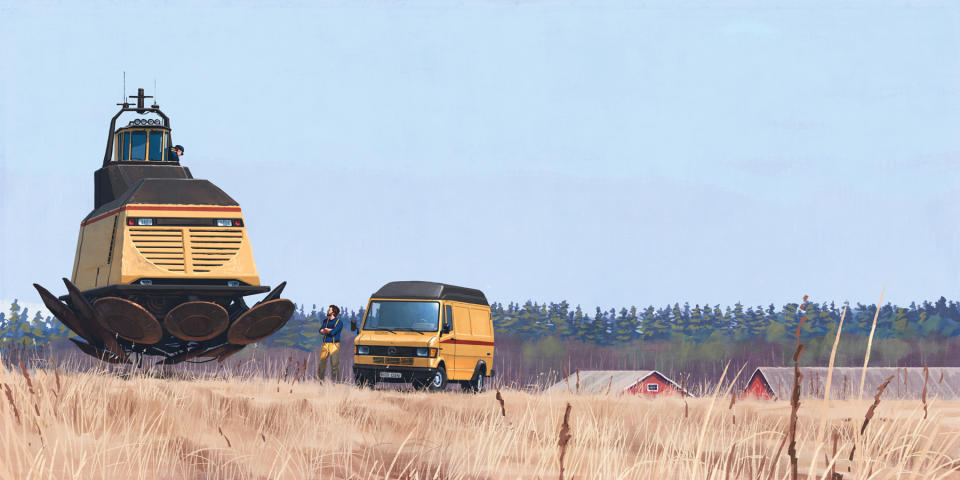
Halpern tried to replicate that human-technology relationship in the show. Like Stålenhag's art, the loop in Ohio uses three massive cooling towers. They're visible in the background of countless shots but never questioned or explored up close. A floating tractor is treated the same way in episode six. Though it plays a critical role in the story, its ability to hover is simply accepted in the world. None of the characters gasp or run away when they see it hovering in a field.
Like Stålenhag's drawings, the show is set predominantly in the 1980s. Or at least, it seems to be. Unlike Stranger Things, the show isn't packed with obvious pop culture references that give the exact year away. Every room isn't littered with Star Wars memorabilia or original NES cartridges, for instance. And the show isn't crammed with iconic tunes like the Guardians of the Galaxy movies. Instead, the historical nods are more subtle. You can approximate the time period based on the clothes that people are wearing, the cars they drive and the appliances in their suburban homes.
Halpern said: "I didn’t want to fetishize the time period and say, 'Look at these clothes from the early 1980s!' Or, 'Do you remember this?' I didn’t want that element of nostalgia [in the show].”
It's unusually difficult to pinpoint the exact year that most of the drama takes place, though. The homes in Ohio, for instance, often feature objects from a few different decades. You might theorize that the show is set in 1982, only to see a typewriter or rotary phone that feels closer to the 1960s or 70s. It's a departure from Stålenhag's art, but an intentional one. Halpern wanted the show to have a "timeless quality" that reinforced the show's own history. The household objects are supposed to be a visual reminder and representation of prior generations that lived in Ohio.
"They show that it’s not just the stamp of right now, but there’s much from the past that carries forward," he explained.
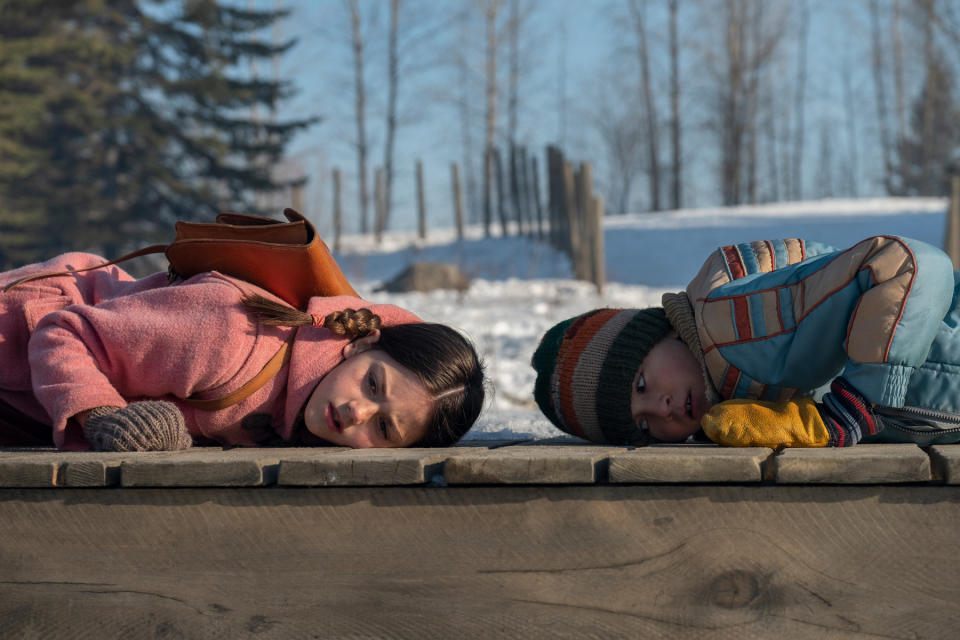
The writer didn't abandon the Scandinavian aesthetic entirely, either. The main family in the show drives a decades-old Volvo, for instance, and often wears jackets and knitted sweaters that feel more European than American. Halpern justified these touchstones through the scientific community that has traveled from across the globe to work at the loop facility. "So while, yes, it is [depicting] America, it is kind of an aesthetic unto itself,” the writer said.
The show's visual language compliments the one-shot episode format. One story grapples with time travel, however that mechanic isn't revealed until the final act. The timeless aesthetic therefore helps to mask the fantastical element, though it's still possible to guess what's happening through dialog and character reactions. Another episode involves the death of a major loop employee. In one scene, two characters step inside a mysterious structure that, through a series of echoes, can reveal how long you have left to live. Later, the employee chooses a relative as their successor, indicating that life is cyclical and the choices we make echo forward through time.
"It goes back to that word timeless," Halpern said. "And so much of the show is about our experience with time.”
Halpern hopes the self-contained stories evoke a sense of wonder. He felt the same emotion while looking at Stålenhag's artwork and worried that any single loop effect would lose its intrigue over an eight-episode season. “It becomes a little too normal,” Halpern said. That's why each episode tackles a wildly different idea. The breadth keeps the show fresh and ensures the viewer is never certain what the rules and narrative boundaries are. “There’s always something new if you keep watching," Halpern hinted. "And I think that’s what I was chasing, ultimately. Just never losing that sense of wonder.”
“So much of the show is about our experience with time.”
The show does have story beats that evolve and carry over between episodes, though. So if you watch the entire season you'll gain a deeper appreciation for the cast. In episode one, for instance, you might think the loop's security guard is a throwaway character. By the end of the show, though, you'll know more about him and view his earlier mannerisms differently.

“The outcomes of these stories ripple forward," Halpern explained. "So someone that’s watching the whole season can see, 'Oh, this person’s connected to that person. Or this person doesn’t know what happened to that person.’ You really start to get immersed in a portrait of a town where there are no extras and everyone can step forward and have their story told.”
Most of the episodes have a quiet and contemplative tone. Again, this was meant to emulate Halpern's paintings, which rarely depict blockbuster action or life-threatening danger. The writer thought it would be wrong to create a show with a looming threat like the Mind Flayer from Netflix's Stranger Things. A better approach, he thought, would be to focus on the moments "in-between incidents." Halpern said: “So often in the genre, the idea or the science fiction concept can swallow up everything else and it becomes solely about that. Because science fiction is so powerful and can get your mind working. But how do you use just the right amount so [the episode] remains a character piece?”
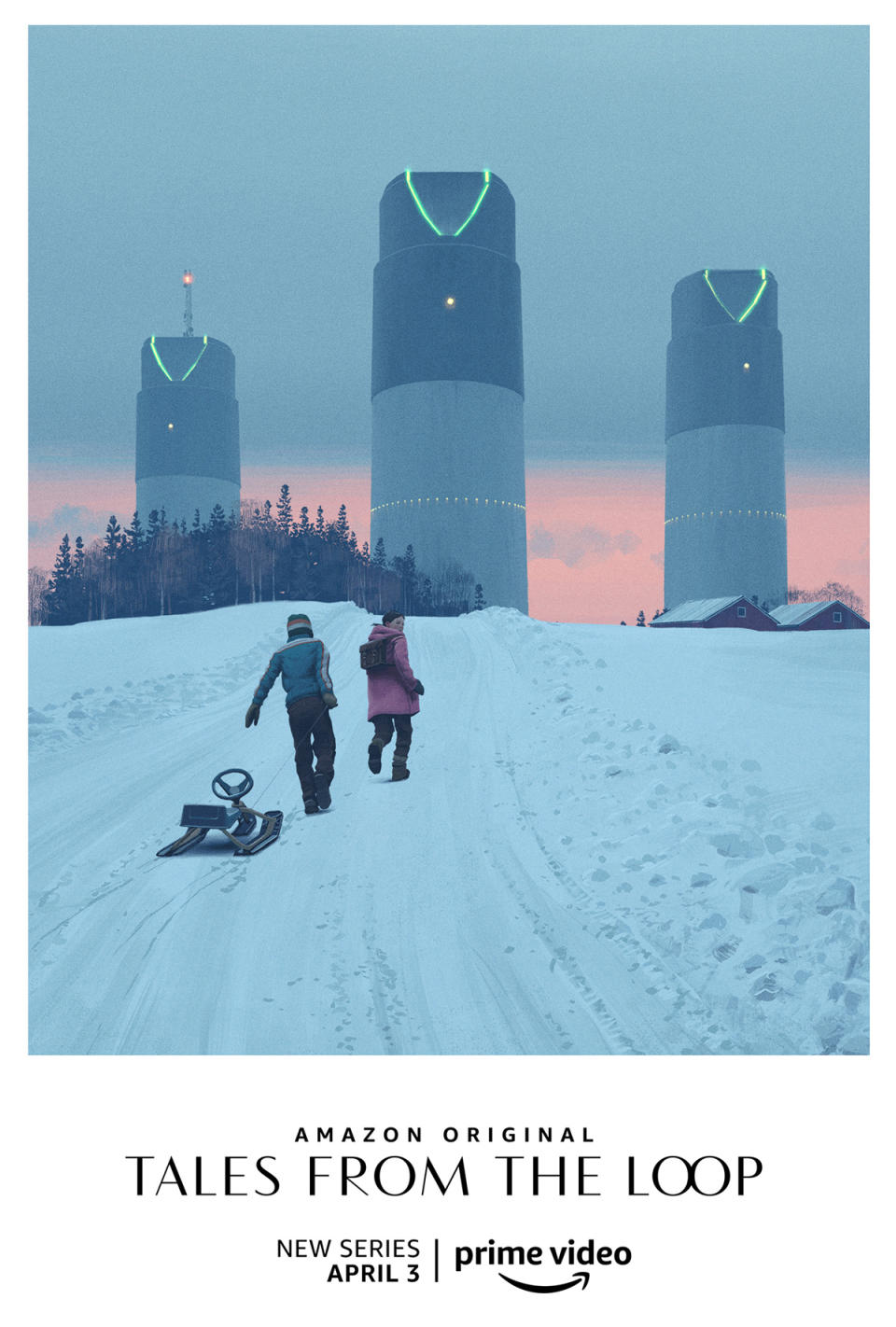
It was a hard balance to strike. With each new fantastical element, it's only natural for people to speculate about its origins. Halpern has an explanation for everything in the show but he rarely offers them to the viewer. That's because Tales from the Loop isn't supposed to be Lost, Westworld, or any other show that uses mysteries to keep viewers hooked.
“It’s about a feeling and experiencing this with these characters and being there with them," Halpern said. "Because I find that more often than not, as soon as you answer a question, there’s another question and another question. Some people find that very stimulating and like to watch things that way. I just don’t happen to be one of them. So I just went in the opposite direction, which means it’s there if you want to think about it, but it’s not a mystery show, because I felt that would take away from the emotion.”
Most series, for instance, keep their top-secret government facility at a distance. They're conceived as the final lair or battleground for a group of plucky but under-resourced heroes. Tales from the Loop invites you inside straight away, though, and reveals the mystical Eclipse that produces the otherworldly effects. It's a startling move that delivers a clear message to the viewer: 'Here's the MacGuffin. This show isn't about how or why the townsfolk are experiencing so many supernatural phenomena.'
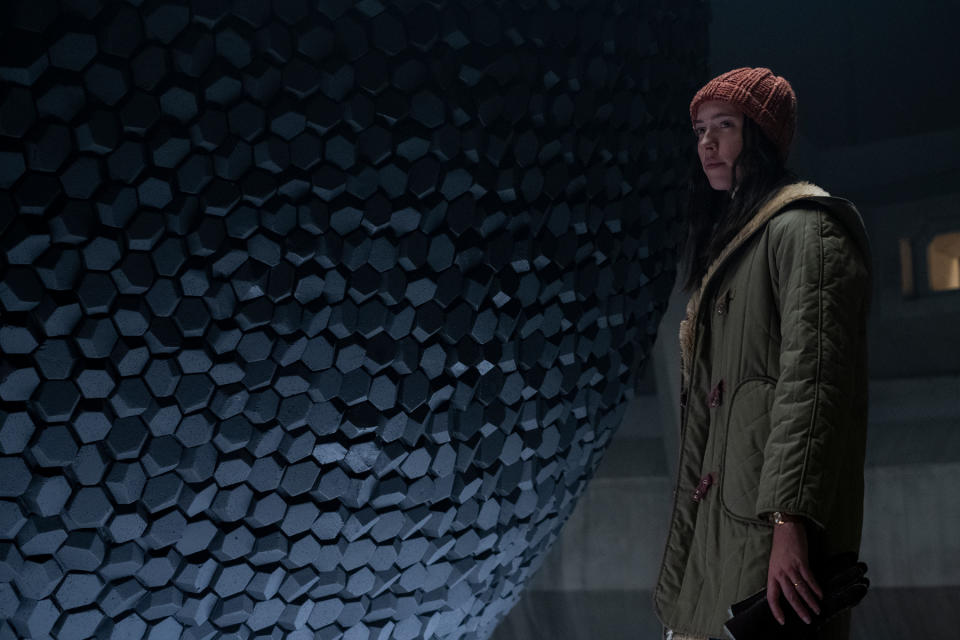
"I didn’t want people distracted by what’s underground and just wanting to get to that," Halpern said. "So that was really the mountain to climb at the beginning, which is, 'What does the loop look like? What does the core of it, the Eclipse, look like?' Revealing that in the first episode took the question off the table and lets the audience know this isn’t a mystery show where you’re wondering what’s happening behind a closed door."
The writing is only one part of the show's construction. Amazon used a company called Rodeo FX to create the technology and loop effects that don't yet exist in our reality. The specialist studio has worked on blockbuster movies such as Arrival, Thor: Ragnarok, Star Wars: The Last Jedi, Blade Runner 2049 and Godzilla: King of the Monsters, as well as countless TV shows including Amazon hits The Boys and Jack Ryan.
Robert Bock and Julien Hery worked as VFX supervisors on Tales from the Loop. Bock worked closely with Amazon while Hery led the project internally at Rodeo FX. The latter hadn't heard of Stålenhag before working on the show, however the company's concept artists were already familiar and the team's animation lead had played the book-based RPG.
At its peak, Rodeo FX had roughly 40 people working on the show. To complete the project, the company's CGI, compositing and asset-building teams used a range of industry-standard software including Autodesk Maya, ZBrush, Nuke, Houdini, Katana and Arnold.
“The team produced more than two hours of VFX work across the eight-episode season.”
The company was flexible and tweaked its artistic approach depending on the episode and desired visual effect. In the first episode, for instance, there's a silent robot standing in a forest. According to Hery, the show's production team created a real-life version of the machine with some basic puppeteering controls. Some movements required visual effects, though, so Rodeo FX had to scan and recreate the prop digitally. “It was based on really great references," Hery said. "We had [Stålenhag's] book, but we also had an on-set build.”
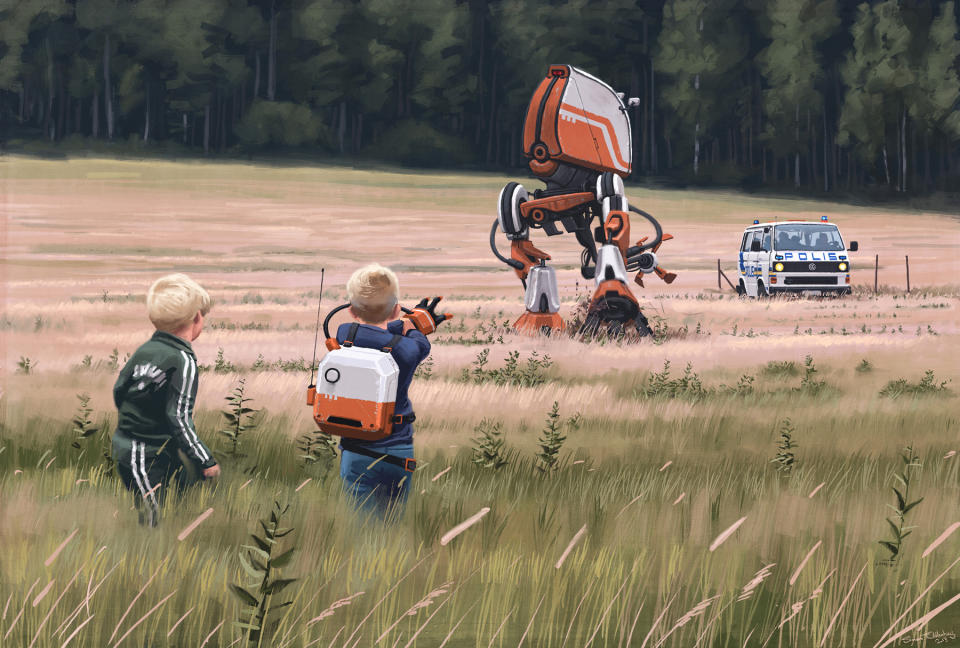
There's another robot in the show with an orange paint job. The production team didn't create a physical prop for this one, so Rodeo FX had to come up with its own digital version from scratch. The android is from one of Stålenhag's most famous paintings, which also serves as the cover for the original Tales from the Loop artbook. It's only ever shown from behind, though, so the team had to envision the front on its own. A drawing doesn't move, either, so Rodeo FX dreamt up the machine's skeleton --where its joints are, and how far they can flex -- and range of movements. "You have lot of interpretation," Hery said.
In general, there were two aesthetic qualities that Rodeo FX tried to follow with its visual effects work. First, the technology needed to be grounded in reality, or at least obey real-world physics. A robot shouldn't be able to leap over a building, for instance, unless it has enormous rockets or thrusters somewhere. Secondly, the digital objects had to look a little mundane. They could be colorful, just like Stalenghag's original artwork, but the paintwork needed to be muted to convey that these are normal and unsurprising parts of the landscape. "Not fancy and modern," Hery said.
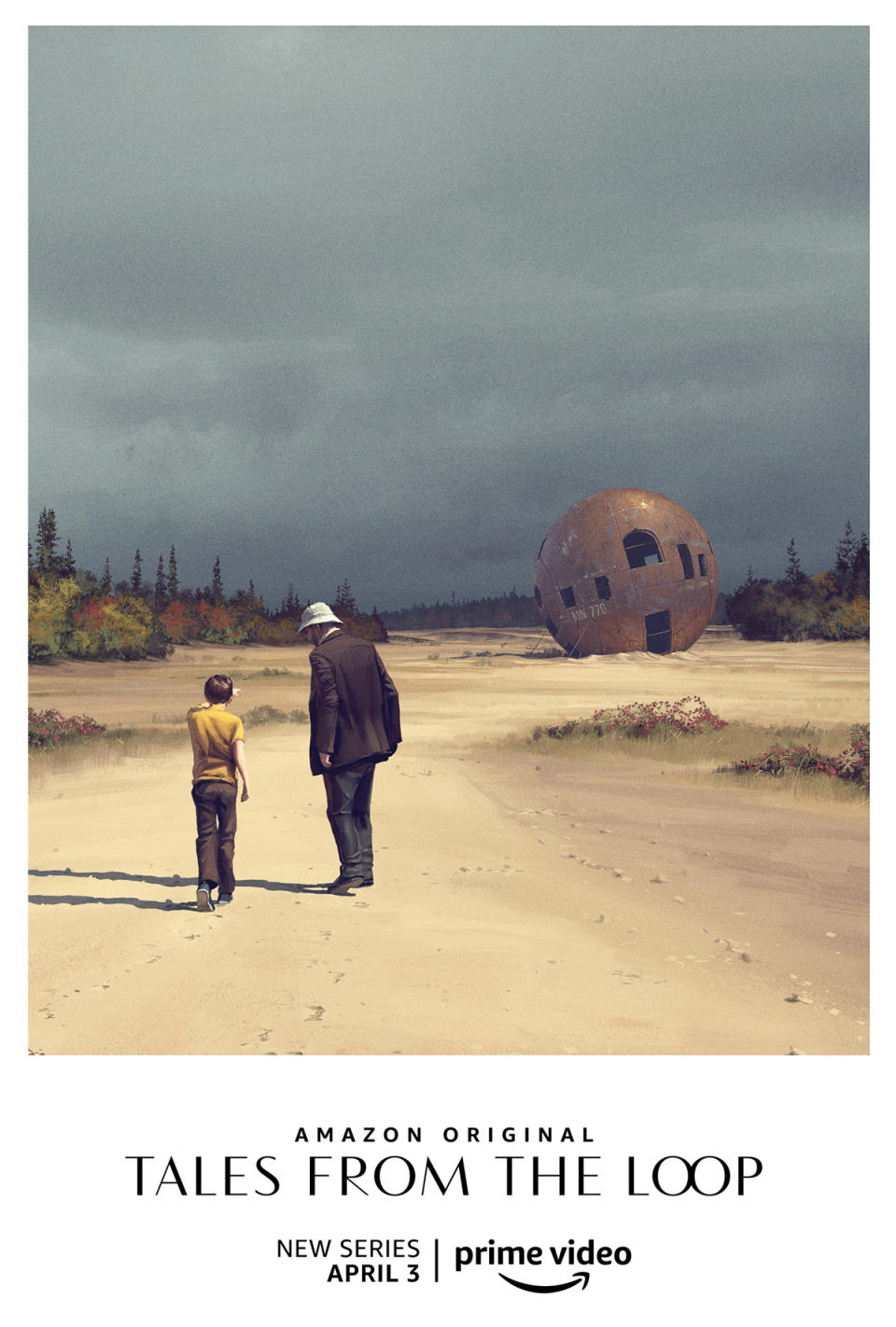
In total, Rodeo FX helped with roughly 700 shots in the show. The melancholic pacing was "a pretty big challenge," according to the VFX supervisor, because many of the final shots were over two minutes long. “We’re more used to a VFX shot being something like four seconds,” Hery explained. In the end, the team produced more than two hours of VFX work across the eight-episode season. "Which, when you think about it, is pretty insane data-wise," he added. "Even compared to a feature film, that's a lot."
Ultimately, the show doesn't try to imitate Stålenhag's painterly style. It's not like Undone, another Amazon exclusive, which used rotoscoping to create a true animation and live-action hybrid. Like Halpern's writing, the visual effects are meant to capture the essence of Stålenhag's work, rather than replicate its style and book-based lore precisely.
For some, that will be a disappointment. They'll miss the European setting and want more of the Goonies-esque hijinks portrayed in the RPG book. Amazon, however, has done its best to create something new. Instead of mere imitation, it's tried to craft a show that is faithful to the source material and packed with new ideas -- narratively, visually and musically -- that justify its own existence. As far as Halpern is concerned, the show delivers on that difficult but worthwhile ambition. "It all worked in concert beautifully," he said. "And it created a world that feels very real and visceral, and like a place you could actually visit, which was my goal.”


